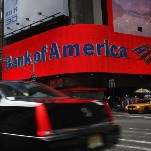Chanel's Runway Show in Cuba Was… Complicated
EntertainmentIt seems that outsiders love to fantasize Cuba as a romantic place that time forgot, a time capsule to the early ‘60s, and/or a snapshot from a scene from Dirty Dancing: Havana Nights, as opposed to the realities of it: a place where 11 million people live off $20 a month and where food is historically scarce; a place where a Fast & the Furious 8 shoot paid extras more than most people earn in a month. Of course, Cuba already has its own, very 2016 culture and its citizens have reported they’re excited for its renewal (and the internet).
On Tuesday night, Chanel added to this distorted romanticization with the presentation of its Resort 2017 collection, a concentration of global wealth taking in the scene along Havana’s Paseo del Prado. Attendees included Carine Roitfeld, Anna Wintour, Tilda Swinton, Tony Castro (Fidel’s grandson), Charlotte Dellal, Vin Diesel, and Gisele, fanning herself and wearing a beret.
“For us, it is almost dreamlike to think about Chanel in Havana,” Leire Fernández, co-proprietor of the Havana boutique Clandestina, told WWD, but “there isn’t really a fashion industry. The Cuban system is based on social needs and values and does not put emphasis on fashion, trends or anything of its kind.”
Karl’s version of Cuban Chanel fashion is both rooted in the brand’s history—his interpretation of the iconic and ever-present influence of Coco’s designs—and also not imaginative enough to imagine a Cuba without stereotypes, despite that millennial modern-day Cubans look cool as hell and contemporary as anyone in the States. (Although the proliferation of ringer tees seem directly inspired by this photoshoot.)
While fashion at its best explores fantasy in the everyday, within that artistic freedom can also make it a vehicle for quick, racialized distillations of popular consciousness. In Chanel, this was interpreted through berets and fedoras and bright colors and fringe and 1950s-style suits and wide ties, and also an actual model smoking a cigar down the runway. (I hate this.) Attendees were ferried in on candy-paint convertibles from the 1940s and ‘50s—Victor, one of the drivers, told CNN, “There are not many cars like this left in the city right now”—which inspired a car-print Lagerfeld used on dresses and suits and on a fucking robe that presumably men are supposed to wear while smoking their cigars.
This “Viva Coco Libre” t-shirt contains multitudes…:
-

-

-

-

-

-

-

-

-

-

-

-

-

-

-

-

-

-

-

-

-

-

-

-

-

-

-

-

-

-

-

-

-

-

-

-

-

-

-

-








































